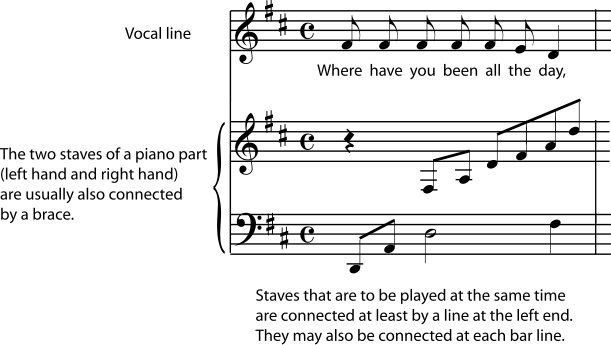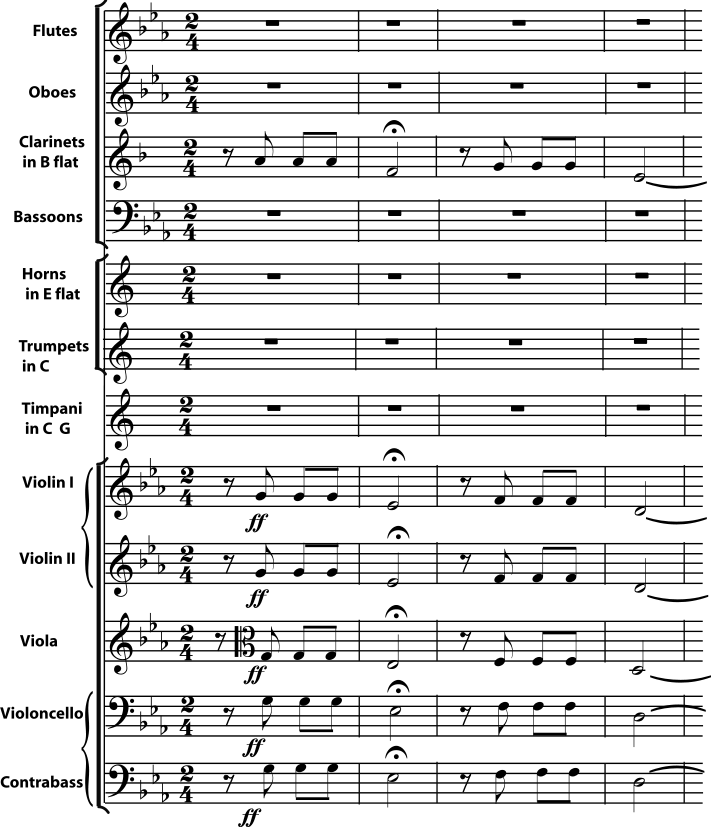Groups of staves
Staves are read from left to right. Beginning at the top of
the page, they are read one staff at a time unless they are connected. If
staves should be played at the same time (by the same person or by different
people), they will be connected at least by a long vertical line at the left
hand side. They may also be connected by their bar lines. Staves played by
similar instruments or voices, or staves that should be played by the same
person (for example, the right hand and left hand of a piano part) may be
grouped together by braces or brackets at the beginning of each line.


Clef*
Treble Clef and Bass Clef
The first symbol that appears at the beginning of every
music staff is a clef symbol. It is very important because it tells you which
note (A, B, C, D, E, F, or G) is found on each line or space. For example, a
treble clef symbol tells you that the second line from the bottom (the line
that the symbol curls around) is "G". On any staff, the notes are
always arranged so that the next letter is always on the next higher line or
space. The last note letter, G, is always followed by another A.

A bass clef symbol tells you that the second line from the
top (the one bracketed by the symbol's dots) is F. The notes are still arranged
in ascending order, but they are all in different places than they were in
treble clef.

Comments
Post a Comment